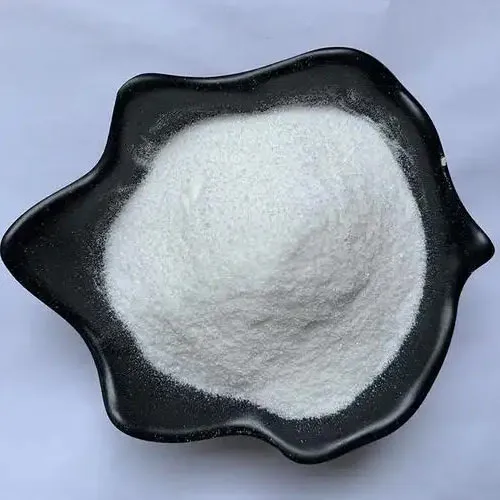
High Substituted Hydroxypropyl Cellulose for Tablet Coating
High Substituted Hydroxypropyl Cellulose is a key solution in the chemical industry, specifically within fine chemicals and cellulose ether. This article explores how Hebei Tangzhi Technology Co., Ltd. supports professionals with durable, high-performance products, and explains why this product is an ideal choice for businesses in these sectors.

Table of Contents
- High Substituted Hydroxypropyl Cellulose Overview
- Benefits & Use Cases of High Substituted Hydroxypropyl Cellulose in cellulose ether
- Cost, Maintenance & User Experience
- Sustainability & Market Trends in chemical industry
- Conclusion on High Substituted Hydroxypropyl Cellulose from Hebei Tangzhi Technology Co., Ltd.
High Substituted Hydroxypropyl Cellulose Overview
High Substituted Hydroxypropyl Cellulose (H-HPC) is a nonionic cellulose ether engineered by etherifying natural cellulose with hydroxypropyl groups to a high molar substitution (commonly MS ~3.0–4.0). This elevated substitution imparts excellent solubility in water and many polar organic solvents, robust film-forming capability, and outstanding thickening and binding performance. In the fine chemicals value chain, H-HPC functions as a versatile rheology modifier and polymeric processing aid across coatings, inks, adhesives, oilfield brines, ceramics, and specialty formulations where clarity, stability, and reproducible viscosity are critical.
- Technical profile: nonionic; typical viscosity grades spanning low to high (e.g., 50–100,000 mPa·s in 2% aqueous solution); low ash; pH utility ~3–11; reversible thermal gelation in water (grade-dependent LCST); strong film integrity and adhesion on diverse substrates.
- Processing advantages: fast wetting and dissolution; pseudoplastic flow for improved leveling; electrolyte tolerance versus many cellulose ethers; compatibility with waterborne and solvent-rich systems.
- Hebei Tangzhi Technology Co., Ltd. supplies consistent, application-tailored grades with tight viscosity control and reliable batch-to-batch performance, supported by technical documentation (COA, SDS) and formulation guidance for industrial users.
Benefits & Use Cases of High Substituted Hydroxypropyl Cellulose in cellulose ether
Within the cellulose ether family, High Substituted Hydroxypropyl Cellulose distinguishes itself by delivering a rare combination of aqueous clarity, solvent compatibility, and film strength. In coatings and inks, it enables stable viscosity, excellent leveling, and anti-sag performance at low dosages, improving print definition and surface appearance. In adhesives and pressure-sensitive systems, H-HPC contributes cohesive film formation and controlled tack while keeping VOCs low in waterborne formulations. For oilfield, it is widely used as a viscosifier and fluid-loss reducer in clear brines and completion fluids due to nonionic character and salt tolerance. In ceramics and extrusion, H-HPC enhances green strength, lubricity, and dimensional stability, supporting high-precision shapes and smoother sintering outcomes.
- Key features: rapid hydration, pseudoplastic rheology, transparency, electrolyte tolerance, broad solvent compatibility, and resilient film formation.
- Competitive edge: consistent substitution level for predictable performance; narrow viscosity distribution for precise QC targets; optimized particle size for dust reduction and fast dissolution.
- Hebei Tangzhi Technology Co., Ltd. leverages deep cellulose ether know-how to tailor H-HPC solutions by viscosity grade and substitution profile, helping B2B formulators accelerate scale-up and shorten time-to-spec.
Cost, Maintenance & User Experience
For B2B decision makers, total cost of ownership extends beyond unit price. High Substituted Hydroxypropyl Cellulose delivers high efficiency at low use levels (often 0.1–1.0%), reducing additive packages and simplifying inventory. Faster dissolution shortens batch cycles and energy use, while stable viscosity minimizes off-spec rework. Its film strength can improve durability and reduce defects, elevating product yield and customer satisfaction—direct contributors to ROI.
- Durability and storage: dry, cool storage in sealed packaging maintains performance; H-HPC’s nonionic nature supports long-term stability across a wide pH range.
- Operational ease: water-soluble films enable straightforward equipment cleanup; predictable rheology streamlines in-line QC and scale transfers.
- User feedback: formulators in industrial coatings report improved leveling at equal PVC with lower VOCs; oilfield teams highlight clear-brine compatibility and reliable rheology in high-density fluids; ceramics producers value enhanced green strength and reduced cracking.
Sustainability & Market Trends in chemical industry
Sustainability priorities are reshaping formulations across fine chemicals. As a cellulose-derived polymer, High Substituted Hydroxypropyl Cellulose supports bio-based content targets and facilitates transitions to waterborne systems that lower VOC emissions. Demand growth is driven by waterborne coatings, digital and inkjet printing, high-performance adhesives, and brine-friendly oilfield chemistries—segments where robust rheology, clarity, and efficiency are decisive. Evolving environmental and safety regulations in major markets encourage materials that improve process efficiency, reduce waste, and support safer handling.
- Hebei Tangzhi Technology Co., Ltd. positions its H-HPC portfolio for sustainability-focused customers, emphasizing responsible sourcing, process optimization, and continuous improvements aimed at waste reduction and resource efficiency.
- Forward-looking support: application-driven technical service, documentation to aid compliance reviews, and collaborative grade selection to meet performance and regulatory objectives in global markets.
Conclusion on High Substituted Hydroxypropyl Cellulose from Hebei Tangzhi Technology Co., Ltd.
High Substituted Hydroxypropyl Cellulose is a high-value cellulose ether for modern fine chemical applications, blending clarity, rheology control, and film strength to unlock reliable performance in coatings, inks, adhesives, oilfield, and ceramics. Hebei Tangzhi Technology Co., Ltd. delivers consistent, application-optimized grades and responsive technical support that help B2B manufacturers improve efficiency and accelerate time-to-market. Ready to evaluate a grade for your formulation?
- Contact us: email: admin@tangzhicellulose.com
- Visit our website: https://www.tangzhihpmc.com

-
Reliable Powdered Cellulose Supplier: Quality, Sustainability & InnovationNewsNov.24,2025
-
Find Trusted Microfibrillated Cellulose Suppliers for Sustainable Industrial SolutionsNewsNov.24,2025
-
Leading Methocel Suppliers: Quality, Innovation & Sustainability in Methylcellulose SupplyNewsNov.23,2025
-
Reliable Hydroxyethylcellulose Suppliers for Industry & Sustainability | Tangzhi HPMCNewsNov.23,2025
-
Top Ethyl Cellulose Supplier – Quality, Sustainability, and Industrial SupportNewsNov.23,2025
-
Trusted CMC Powder Suppliers for Food, Pharma & Industrial Use | Tangzhi HPMCNewsNov.22,2025





















